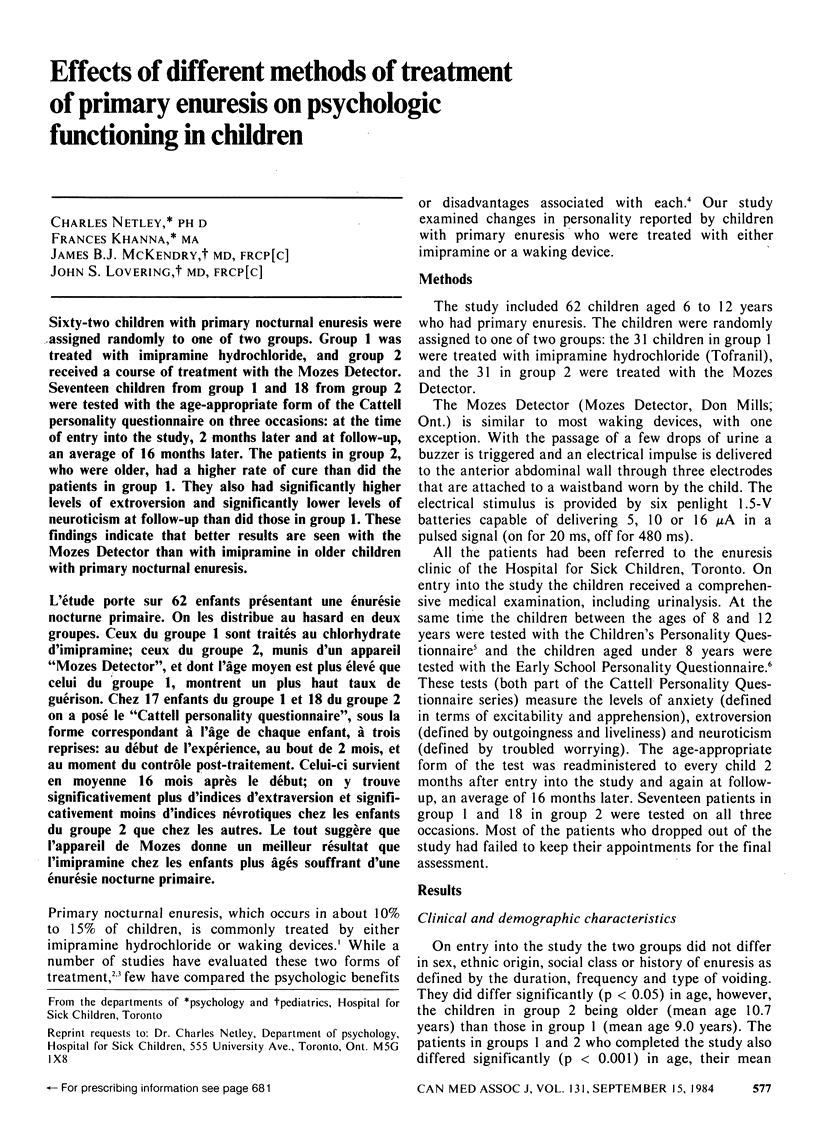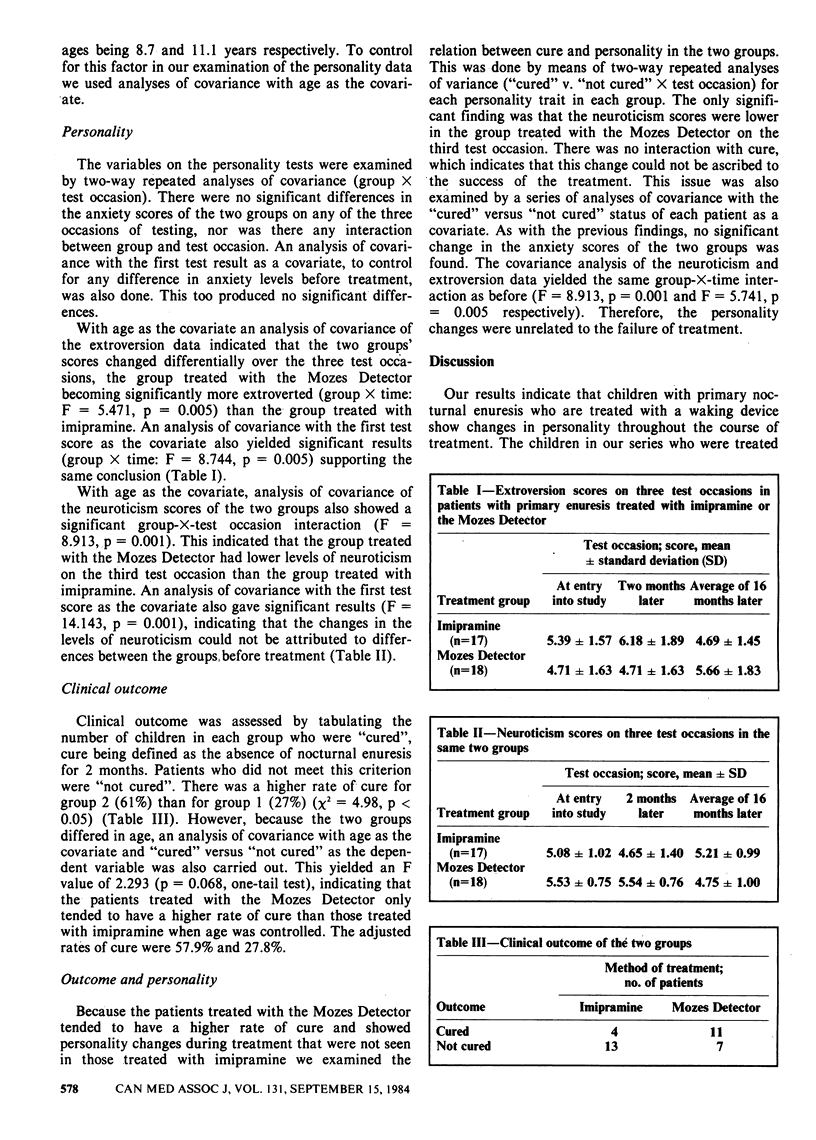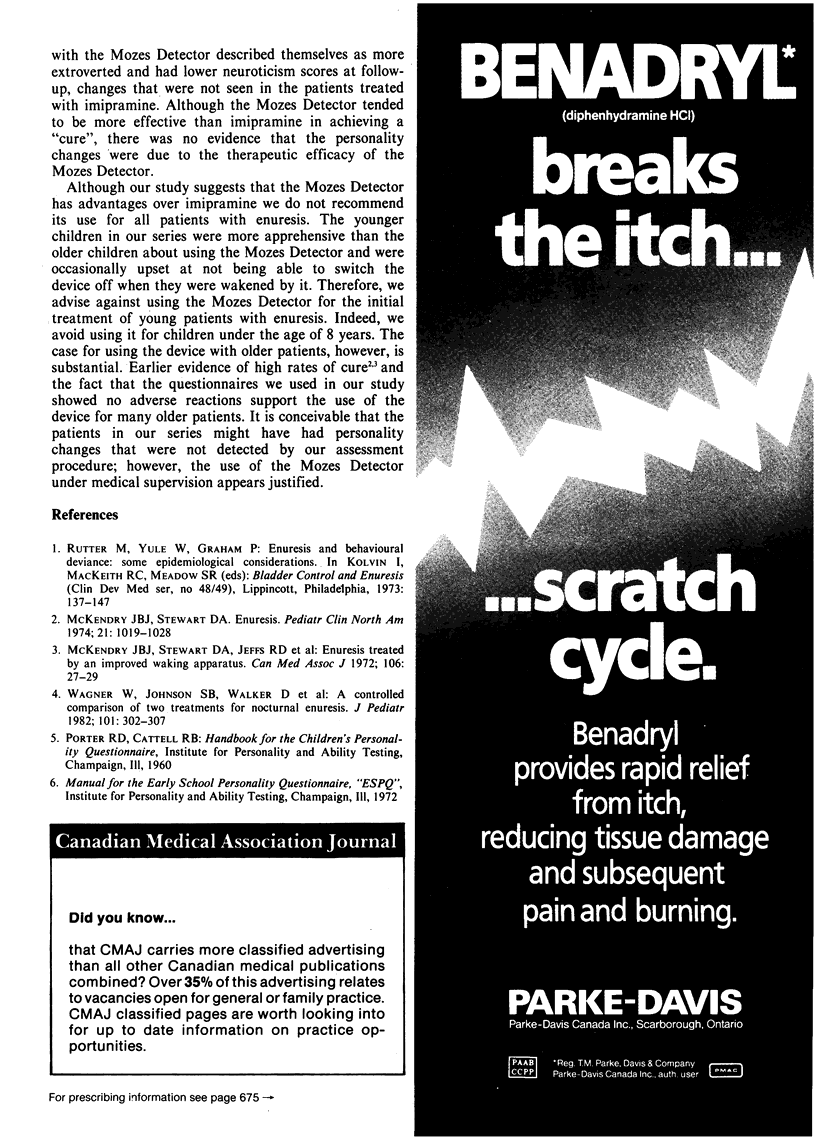Abstract
Sixty-two children with primary nocturnal enuresis were assigned randomly to one of two groups. Group 1 was treated with imipramine hydrochloride, and group 2 received a course of treatment with the Mozes Detector. Seventeen children from group 1 and 18 from group 2 were tested with the age-appropriate form of the Cattell personality questionnaire on three occasions: at the time of entry into the study, 2 months later and at follow-up, an average of 16 months later. The patients in group 2, who were older, had a higher rate of cure than did the patients in group 1. They also had significantly higher levels of extroversion and significantly lower levels of neuroticism at follow-up than did those in group 1. These findings indicate that better results are seen with the Mozes Detector than with imipramine in older children with primary nocturnal enuresis.
Full text
PDF


Selected References
These references are in PubMed. This may not be the complete list of references from this article.
- McKendry J. B., Stewart D. A. Enuresis. Pediatr Clin North Am. 1974 Nov;21(4):1019–1028. doi: 10.1016/s0031-3955(16)33075-9. [DOI] [PubMed] [Google Scholar]
- McKendry J. B., Stewart D. A., Jeffs R. D., Mozes A. Enuresis treated by an improved waking apparatus. Can Med Assoc J. 1972 Jan 8;106(1):27–29. [PMC free article] [PubMed] [Google Scholar]
- Wagner W., Johnson S. B., Walker D., Carter R., Wittner J. A controlled comparison of two treatments for nocturnal enuresis. J Pediatr. 1982 Aug;101(2):302–307. doi: 10.1016/s0022-3476(82)80146-7. [DOI] [PubMed] [Google Scholar]


